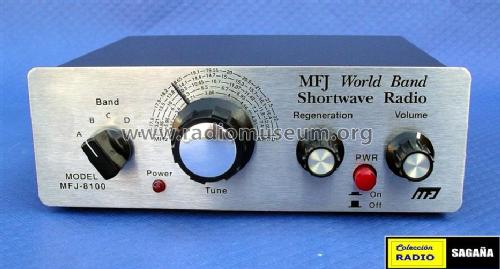

Antentop is FREE e-magazine devoted to Antennas and Amateur Radio an
Special page devoted to
Some Thoughts on Regenerative Receivers

Custom Search
|
ANTENTOP-
01- 2010, # 012 |
Some Thoughts on Regenerative Receivers |
|
|
Fine tuning on the Ten-Tec 1253 is done with an additional
voltage control on the tuning varactor. This is a quite satisfactory
solution, in my opinion. You just have to remember to return the
fine tuning control to the center position before you move up
or down the band when scanning for additional stations. The only clear problems that I experienced with the
Ten-tec 1253 were: Lack of a shielded antenna connection - I added an
SO-259 connector to replace the binding post. A random length
wire can be attached through a banana plug. The second regenerative receiver kit I built was the
MFJ-8100. They take a slightly different tack in the design. They
use a series of inductors with a simple multi-position switch
to tap into the inductor string for band switching. They, as do
Ten-tec, use simple ferrite miniature inductors, except for one
that is a toroid that you have to wind. All the inductors in the
Ten-tec 1254 design are miniature ferrite inductors. |
MJF-8100 uses a nice variable capacitor with a vernier
reduction drive for tuning. This "feels" better than
the potentiometer used in the Ten-tec 1253. The tuning is a little
"fast" on the upper bands, but acceptable. I admit to
being a tradtionalist on the issue of real variable capacitors.
I am not sure God intended us to tune circuits with varactors.
The MFJ-8100 has five bands to cover most of the same range as
the Ten-tec 1253, but this is due to using a variable capacitor
instead of a varactor. Again, lack of a shielded antenna connection. I added
an SO-259 connector on the back panel. I did retain the supplied
binding post for the antenna, however. Lack of external power supply connection. A power
jack from Radio Shack and a SPDT toggle switch took care of this.
I can use an external 9 volt battery. There are eight screws to
remove to get the case apart to change the battery, so an external
battery is handy. |
|
|
MFJ- 8100 Credit
Line: http://www.radiomuseum.org/r/mfj_mfj_8100.html |
||
|
|
|
|
|
Page 101 |
||
63 64 65 66 67 68 69 70 101 102
 |
 |
 |
 |
Just for Fun:

Powered byIP2Location.com
Thanks for your time!
Last Updated:
January 22, 2020 21:55





